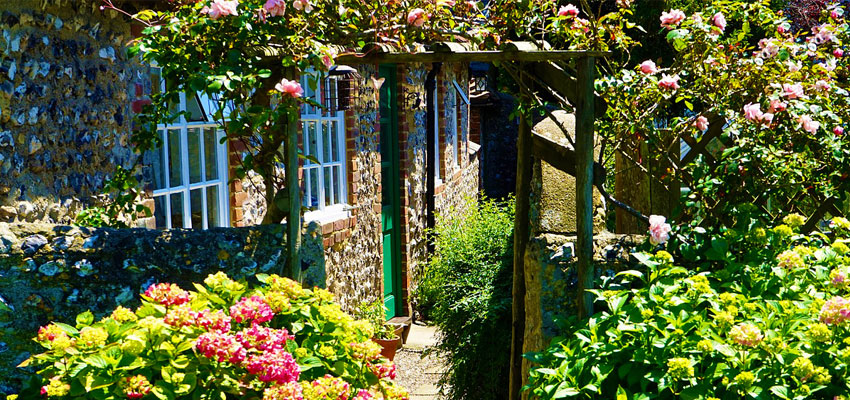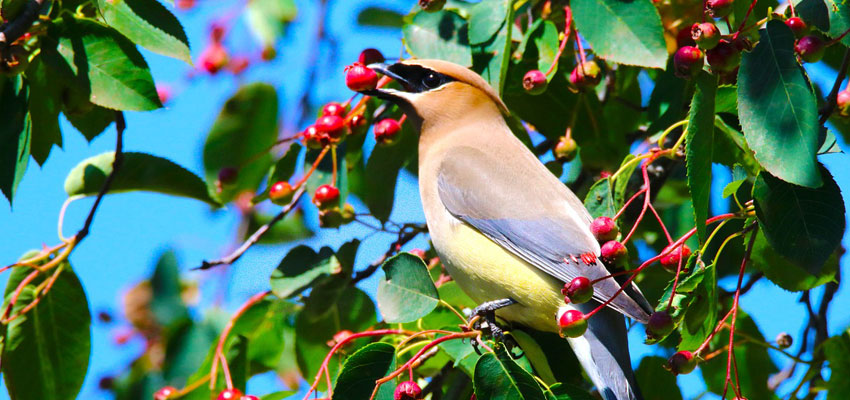
Wild birds, those tiny, feathered dinosaurs, bring all manner of goodness to a backyard. Even the drab ones have their own beauty. The songs of some birds are transporting to hear, and even the caw of a crow or the call of a bluejay can be comforting. Birds eat harmful bugs and are always fascinating to watch. Here are some tips to attract birds for some backyard birding:
First, Be Good to the Other Critters
To attract birds, it helps to support the other creatures that visit the backyard. Cut down on pesticides and herbicides, and try more natural means of controlling pests. Don’t automatically consider weeds as the enemy. Some have interesting flowers and foliage and produce berries that birds like to eat. One pest that does need to be controlled is feral cats or even domesticated cats. They kill billions of birds every year. If the household has a cat, keep it indoors or bell it to warn the birds. Call the local animal control department to help deal with the feral cats, and keep the backyard a refuge for the local birds. Many have had success with cat enclosures and cat fencing that keep cats out of your sanctuary.
Food
Birds eat a great range of foods. Some eat only small arthropods, others eat seeds, others eat berries and other fruit, and some eat grains. Some birds eat all of these things or eat a combination of them. Hummingbirds love nectar, though they do need animal protein for their babies. Not only this, some birds will only take supplemental food from planters hung above the ground while others only feed on the ground. The trick is to provide a variety of bird food for a variety of birds. Plant or encourage plants such as blackberries, elderberries, mahonia and even pokeberry. Plant red or orange tubular flowers such as monardas for hummingbirds and other nectar-loving birds.
Bird feeders provide supplemental food and are much appreciated when natural food sources are scarce. Since birds have different ways of feeding, the homeowner should offer different types of them to attract different birds. Whatever bird feeder is used should be placed in an open area so the birds can look out for predators. Do not put too much food out at once as this can attract pests, and fungi can grow on leftover seeds left out in the rain and damp. Feeders should be cleaned regularly with warm, soapy water, rinsed thoroughly and allowed to dry completely before they are put back in service.
What to Feed
- Peanuts – A lot of wild birds simply love peanuts, which bring lots of oils and protein. The homeowner should make sure they are perfectly fresh and free of mold.
- Hemp Seed – Hemp seed has a hard shell that is best cracked open by birds such as grosbeaks. It is white when it’s ripe. Green seeds are immature.
- Canary Seed – This is also called plain old bird seed and is found in a lot of commercial seed mixes. It’s yellow, shiny and pointed and has a lot of carbohydrates and protein.
- Niger Seed – Goldfinches find these tiny black seeds irresistible. They need a special dispenser, however.
- Black Sunflower Seeds – Birds love any kind of sunflower seeds, but black sunflower seeds have a thin shell that’s easy to open. These seeds can be put out all year as the birds also feed them to their young.
What Not to Feed
- Do not put out anything with salt, such as salted peanuts.
- Avoid anything that may swell up inside the bird, such as uncooked rice. That old wives’ tale is actually true.
- Of course, avoid foods that are not fresh. Do not toss spoiled food to the birds, but throw it out, or put it in the compost pile.
Water
A ready supply of fresh water for drinking and bathing will bring birds to the garden. Water is especially important during times of drought or during brutal winters when other sources of water are frozen. A birdbath is ideal. It does not have to be fancy or expensive. Indeed, it can be an old plastic bowl that is no longer used. Change the water, and clean the bird bath regularly. Be very careful to get rid of any signs of mold or algae. Solar heated birdbaths are available that keep water liquid during the winter months.
Nest Sites
 A nest is not only a place to raise the young but a sanctuary. Some birds choose thorny, climbing vines to build their nests. Virginia creeper on the side of the house is a popular place for a bird to build a nest. When the vine flowers it attracts insects, and the flowers produce edible berries in the fall. Other birds build their nests under the eaves of the house. Bluebirds love nest boxes that are raised on poles in a meadow garden. Other birds such as purple martins nest in “bird condos,” while other birds are happy to build their nests in gourds hung from a tall pole.
A nest is not only a place to raise the young but a sanctuary. Some birds choose thorny, climbing vines to build their nests. Virginia creeper on the side of the house is a popular place for a bird to build a nest. When the vine flowers it attracts insects, and the flowers produce edible berries in the fall. Other birds build their nests under the eaves of the house. Bluebirds love nest boxes that are raised on poles in a meadow garden. Other birds such as purple martins nest in “bird condos,” while other birds are happy to build their nests in gourds hung from a tall pole.
The homeowner can help the birds line their nests by putting out the lint from the clothes dryer. Some birds love horse hair, so if the homeowner has a horse or pony, they should leave some hair out for the birds after the horse is groomed.
With these tips in mind, backyard birding will be a pleasure for years and through all seasons.

